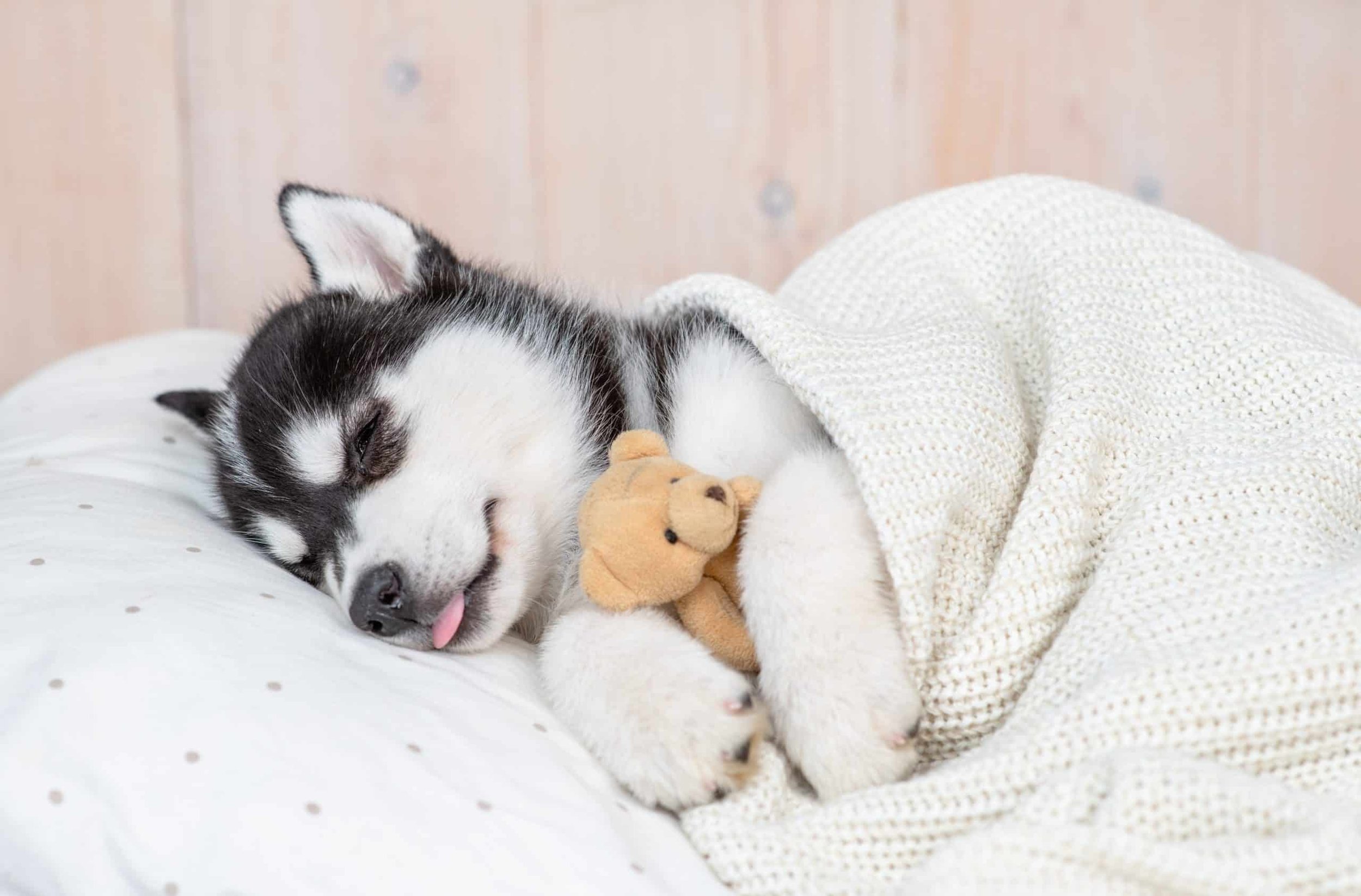Do Dogs Dream?
According to the scientific evidence, dogs do, in fact, dream.
During sleep, the brains of humans and dogs’ function in a similar manner, exhibiting brain wave patterns that show a difference between the sleep cycle’s two main stages. When a dog first falls asleep, he experiences slow wave sleep or SWS, where his brain waves are slow and undulating. While all his mental processes are quiet, his muscle tone is still active, keeping his body from being entirely relaxed. And although he may seem to be resting calmly, he can be easily awakened.
The second, deeper stage, characterized by rapid eye movements, is called REM sleep, where his brain waves are faster and irregular. Unlike SWS, his muscles are more relaxed, but his mind is more active, and his eyes will dart back and forth beneath his eyelids. Due to this heightened mental activity, your dog may chatter, whine or bark, breathe rapidly and move his paws and/or his legs.
How, then, have scientists gathered the information about a dog’s ability to dream? Through extensive clinical observation, leading to these exciting discoveries:
As a dog falls asleep, his breathing becomes deeper and more regular. After about 20 minutes, during REM sleep, his dreams will usually begin. While dreaming, his breathing may become shallow and irregular, and some of his muscles may twitch. During REM, his brain functions much the way it does when he’s awake, and many a dog owner describes these twitches as their dog “chasing rabbits in his sleep.” His eyes will then move behind his closed lids and dart about as if he’s looking at something. It’s believed that during this cycle, a dog, like his owner, relives his daytime experiences and “sleep runs” as he fetches a ball or chases a cat. Fortunately, however, the brain is equipped with a safety feature that prevents both dogs and humans from physically acting out their dreams: the pons.
According to the experts, some dogs dream more than others, and the frequency and length of their dreams vary depending on their age and size. Puppies, for instance, acquire a vast amount of new information each day, giving them a great deal of material to process at night, and causing them to dream more than their adult counterparts. (Seniors also dream more than middle-aged dogs). Smaller dogs appear to dream more than larger dogs. Whereas a chihuahua may dream every 10 minutes, a golden retriever may only dream once every 60 - 90 minutes. However, the chihuahua’s dreams may merely last a minute while the gulden’s dreams may be 5 - 10 minutes long. The length and frequency of dogs’ dreams are also related to the amount of sleep they require. A large dog who’s extremely active outside during the day may sleep more soundly and experience longer phases of REM sleep than a low energy “couch potato”, allowing him more time to dream.
Given that both humans and dogs require uninterrupted sleep for the health of their bodies and minds, ensure that your dog has a quiet, comfortable area to rest and do NOT disturb him. If you happen to observe your dog having a dream (please note that most dreams are not nightmares), adhere to the old adage “let sleeping dogs lie.” Disrupting his sleep during the REM cycle can not only startle him, but result in an unintended bite or, at the very least, one very sleep-deprived dog in the morning.

